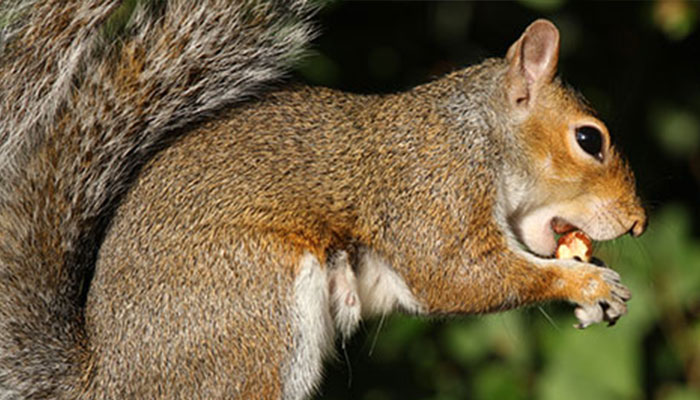While we believe that the books and resources recommended may be of value to you, keep in mind that these are suggestions only and you must do your own due diligence to determine whether the materials are appropriate and suitable for your use. PNC has no sponsorship or endorsement agreement with the authors or publishers of the materials listed.
FALL

Squirreling Away Food
Children will learn about how squirrels get ready for winter.

Lesson Objective
Children will learn how some animals spend time in the fall getting ready for winter, and explore the fall habits of squirrels.
ScienceArt
What You'll Need
- Shallow basin of water
- Long pieces of brown butcher paper – 1 per 3 children
- Black tempera paint – 1 bottle
- Variety of plastic animals – at least 1 per child
- Paper plates – 1 per 2 children
- Paper towels – 1 roll
- 8 ½”x11” white paper – 1 sheet per child
- Pictures of a variety of animals
- Pictures of nuts, seeds, and other food that squirrels would not eat, such as ice cream and hot dogs
What To Do
Note: This activity involves taking two walks outside – in the morning and in the afternoon.
- Introduce the concept of storing food for the winter (see Did You Know?).
- Take the children on a squirrel walk in the morning and count the number of squirrels you see. When you see one, look up into the nearby trees and see if you can spot a nest. (Squirrels are active between early morning and midday. They spend the rest of the day in or around their nests.)
- Later in the afternoon, go on another walk and count the squirrels again. Have the children compare the number of squirrels they saw in the morning versus the afternoon.
- Discuss how we don’t always see animals, but we can find evidence of them by looking for their tracks, or footprints, in the dirt, mud or snow.
- To give the children a basic understanding of animal tracks, let them make some tracks of their own.
- Have each child take off his/her shoes and socks, step into a basin of water and walk on a long piece of paper. Let the children examine their footprints.
- Next, make tracks using paint and plastic animals.
- Set the children up in small groups at tables. Provide each table with a few paper plates of paint, paper, and plastic animals.
- Demonstrate how to dip the animals in paint and make tracks on paper.
- Encourage the children to use different animals and compare the animals’ prints.
Resources
Home School Resources
Home educators: use these printable lesson PDFs to teach this lesson to your home schoolers. They're available in English and Spanish.
Content Provided By
Common Core State Standards Initiative – These lessons are aligned with the Common Core State Standards ("CCSS"). The CCSS provide a consistent, clear understanding of the concepts and skills children are expected to learn and guide teachers to provide their students with opportunities to gain these important skills and foundational knowledge [1]. Visit the CCSS


